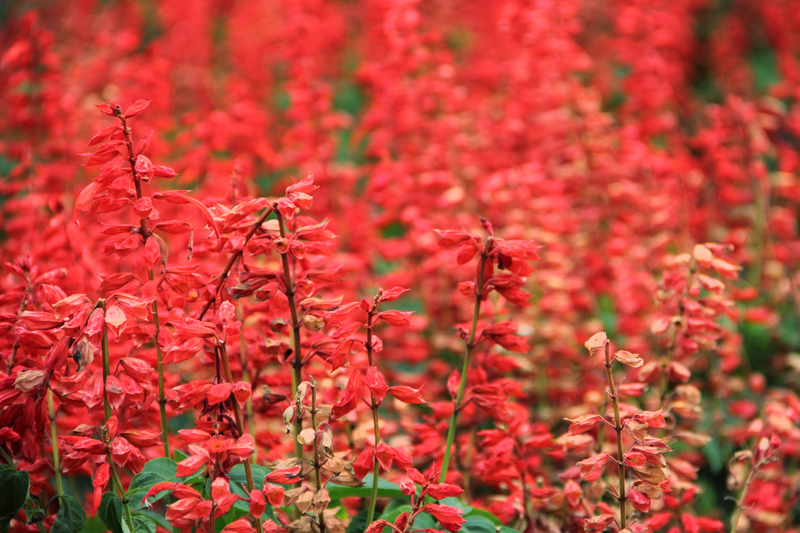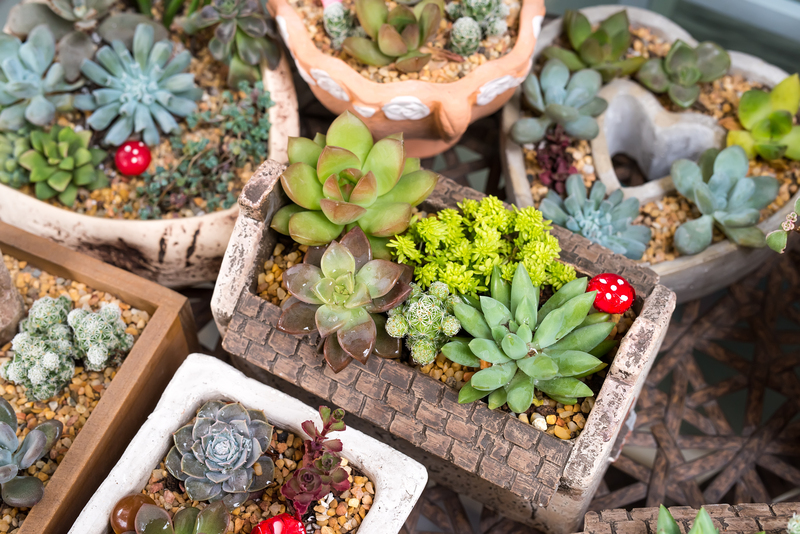Tips for Winterizing Your Garden Plants Successfully
Posted on 25/05/2025
Tips for Winterizing Your Garden Plants Successfully
As the days become shorter and temperatures drop, smart gardeners prepare for the chill by safeguarding their beloved plants. Winterizing your garden plants not only ensures their survival through the coldest months but also gives you a flourishing head start come spring. In this comprehensive guide, we'll walk you through expert tips for winterizing garden plants and offer actionable steps to ensure your landscape remains vibrant, healthy, and resilient.
Why Winterizing Garden Plants is Crucial
Winterizing garden plants means preparing your green space so that your perennial, biennial, and even some annual plants can survive the harsh elements of winter. While some plants are naturally tolerant of cold, many require special care to prevent damage from snow, ice, frost, and desiccating winds.
Proper winterization:
- Protects roots and stems from frostbite
- Minimizes snow and ice damage
- Reduces disease and pest problems
- Preserves soil structure and fertility
- Increases plant survival rates and vigor in spring

When to Start Winterizing Your Garden Plants
It's essential to start the process of winterizing your garden plants before the first hard frost hits. Typically, late autumn is the best time, but this varies depending on your climate. Watch for the following signs:
- Daytime temperatures dropping consistently below 50?F (10?C)
- Nighttime frosts are forecasted
- Most of the plant's growth has ceased
Pro tip: Check your local USDA Hardiness Zone for average frost dates to plan ahead!
Assessing and Preparing Your Garden for Winter
Step 1: Identify Sensitive Plants
Start by walking through your garden and determining which plants need extra protection. Many perennials, young shrubs, non-hardy bulbs, and container plants are especially vulnerable. Make a list of these plants to plan your winterization strategy.
Step 2: Clean Up the Garden
Clear dead or diseased plant material. This helps prevent overwintering pests and fungal spores from thriving under snow cover.
- Remove fallen leaves, stems, and spent flowers; compost only healthy debris.
- Cut back perennials but leave some stalks for beneficial insects like bees that nest in stems over winter.
Step 3: Amend and Mulch Your Soil
Applying a final layer of compost or well-rotted manure helps replenish nutrients and improve soil structure. Follow with a thick mulch of straw, shredded leaves, or bark chips to insulate plant roots and reduce temperature fluctuations.
- Apply mulch 2-4 inches deep for perennials and shrubs
- Avoid piling mulch directly against stems to prevent rot
Effective Methods for Winterizing Various Types of Garden Plants
1. Perennials
- Cut back foliage after frost kills the tops. Leave 2-3 inches of stem to protect the crown.
- Divide and transplant overgrown clumps while soil is still workable.
- Water deeply before the ground freezes--moist soil insulates roots better than dry soil.
- Mulch generously to keep soil temperatures stable.
2. Shrubs and Small Trees
- Water young and newly-planted shrubs well--especially evergreens.
- Wrap sensitive species (like roses or hydrangeas) with burlap or frost cloth for extra protection against windburn and desiccation.
- Use tree guards on trunks of young trees to prevent splitting from sunscald and rodent damage.
- Prune only to remove dead or diseased wood; major pruning should wait until late winter or early spring.
3. Bulbs
- Dig up tender bulbs (e.g., dahlias, gladiolus) after foliage dies back. Store bulbs dry in a cool, frost-free place over winter.
- For hardy spring-flowering bulbs (e.g., tulips, daffodils), plant in fall and cover with extra mulch in colder regions.
4. Container Plants
- Move pots with tender plants into a sheltered area such as a garage, sunroom, or unheated greenhouse.
- If pots must stay outdoors, cluster them together by a wall and wrap with bubble wrap or sackcloth, raising pots off the ground with pot feet or bricks.
- Keep containers just moist--not soggy, not dry--over winter.
5. Vegetable Gardens
- Harvest remaining crops before heavy frost.
- Remove annual plants, clean up debris, and add compost to beds to boost soil health for next year.
- Grow winter cover crops (like clover, rye, or vetch) to prevent weed growth, add organic matter, and reduce erosion.
Protecting Special Garden Plants and Delicate Species
Some garden favorites demand a bit more attention! Here's how to handle winterizing challenging or exotic garden plants:
- Ornamental Grasses: Tie in loose bundles to keep centers dry and cut back in late winter.
- Tender Roses: Hill soil or compost over the base or use rose cones for hybrid teas. Cover climbers with burlap wraps.
- Fig Trees / Citrus: Wrap trunks with insulation and use mulch at the base; shelter container-grown trees indoors if possible.
- Alpine and Rock Garden Plants: Reduce watering and provide excellent drainage, as rot is often a bigger issue than cold.
Key Winterizing Supplies for Every Garden
Stock up on these essential tools and supplies to make winterizing your garden plants a breeze:
- Burlap fabric or frost blankets
- Mulching materials (straw, bark, shredded leaves)
- Garden pruners and loppers
- Tree guards or plastic spirals
- Compost, manure, or slow-release organic fertilizer
- Watering can or hose (for pre-freeze watering)
- Pots, trays, or crates for storing bulbs
Top Tips for Winterizing Your Garden Plants Successfully
- Plan ahead: The earlier you prepare, the less stress your plants will endure.
- Water before freezing: Ensure the soil is well-hydrated going into winter to reduce freeze-thaw damage and dehydration.
- Use the right mulch: Organic mulches are best--they not only insulate but also enrich the soil as they decompose.
- Avoid fertilizing late: Stop feeding plants in late summer to prevent tender new growth susceptible to frost.
- Mark your plants: Label overwintering bulbs or perennials to avoid accidental digging in spring.
- Keep an eye out after storms-- brush heavy snow off branches to avoid breakage, but never attempt to melt ice with hot water!
- Ventilate covered plants: On warmer winter days, lift covers briefly to prevent excessive humidity and mold.
- Monitor closely: Check your garden regularly for signs of animal damage, rot, or disease over winter.
Common Mistakes to Avoid When Winterizing Garden Plants
- Applying too much mulch directly against plant stems- this can cause rot and invite pests.
- Neglecting to water during a dry fall--plants need moisture to survive winter dehydration.
- Improper pruning--cutting too much or at the wrong time can increase vulnerability.
- Forgetting container plants--potted plants are more exposed to freeze-thaw cycles and need extra care.
- Skipping tool cleaning and garden clean-up--leftover debris can harbor diseases and pests.
Benefits of Successful Winterizing for Your Garden
Winterizing your garden plants isn't just about survival--it's about building resilience and ensuring vigorous growth next season. Here are some key benefits:
- Higher survival rates-- fewer lost plants means less replanting and money spent in spring
- Stronger, earlier growth-- well-protected plants emerge more robust
- Reduced pest and disease pressure-- proper sanitation and covering disrupts overwintering pests
- Improved soil health-- cover crops and organic matter boost fertility and structure
- Gardener peace of mind-- confident you've done your best for your landscape investment!

Frequently Asked Questions (FAQ) About Winterizing Garden Plants
- Q: Can I use plastic to cover my plants?
A: Plastic traps heat but doesn't breathe--use only in emergencies and remove promptly in the morning to prevent condensation and mold. - Q: Is it really necessary to mulch every year?
A: Yes! Mulch insulates roots, feeds the soil, and prevents heaving caused by freeze-thaw cycles. - Q: Should I fertilize in late autumn before winter hits?
A: Not recommended; late-season fertilization can trigger growth that is vulnerable to frost. Stick to compost or slow-release amendments. - Q: When can I remove winter protection in spring?
A: Wait until all threat of frost has passed and new growth appears. Remove covers gradually to harden plants off.
Conclusion: Prepare Your Garden for a Thriving Spring
With these winterizing garden plants tips, you're setting your landscape up for an incredible spring revival. Remember--successful winterizing is all about observing your unique garden's needs, protecting vulnerable specimens, and preserving the health of your soil and plants. Don't wait until the first snow; start your preparations early and enjoy the peace of mind that your garden is in safe hands.
Take action this fall--follow these proven steps for winterizing your garden, and next year's blooms will reward you for your diligence!

